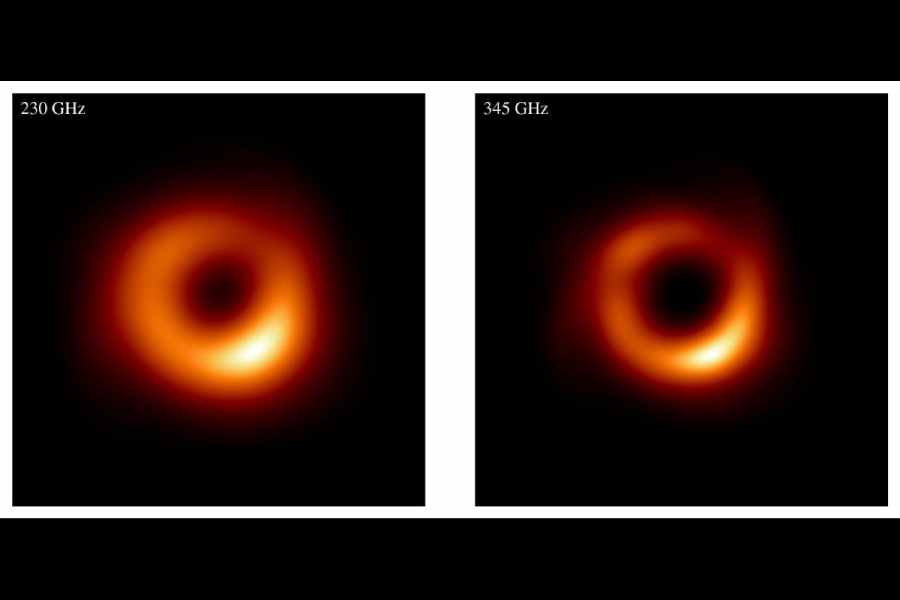Scientists on Tuesday announced a technological feat that has yielded the sharpest images yet of distant galactic centres from an Earth-based telescope. They are now preparing to use it to image black holes in far greater detail than currently possible.
A mammoth research team called the Event Horizon Telescope (EHT) Collaboration said it had achieved in test observations the highest resolution ever from Earth in detecting light from active galactic nuclei, which are the bright centres of distant galaxies powered by supermassive black holes.
The EHT Collaboration had released the first-ever images of M87*, a supermassive black hole at the centre of the M87 galaxy in 2019, and of Sgr A*, the black hole at the core of the Milky Way galaxy in 2022. The researchers had obtained the black hole images by linking observations from multiple radio observatories across the planet through a technique that uses multiple telescopes to function as a single Earth-sized virtual telescope.
Black holes are the remnants of supermassive stars that have exhausted all their fuel and collapsed under their own gravity into objects with such strong gravitational pull that not even light can escape them. For astronomers and physicists, black holes remain objects of mystery.
The new feat by the EHT Collaboration involves observing distant galactic centres at a frequency of 345 GHz, higher than the 230 GHz frequency through which the earlier images of the black holes had been obtained.
When future observations of black holes at 345 GHz are combined with the existing images of the M87* and Sgr A*, the results will yield black hole photographs that are 50 per cent “crisper” as well as multi-colour views of the region outside the boundary of black holes.
“This will lead to the sharpest images of black holes… we expect those to come in the next year or so,” Shepherd Doeleman, founder-director of the EHT at Harvard University, told The Telegraph via email.
The EHT collaboration used telescopes in Chile, France, Greenland, Hawaii and Spain for the observations at 345 GHz. The collaboration of more than 400 scientists from across the world published its results in The Astronomical Journal on Tuesday.
Scientists say the additional frequency also provides another stepping stone towards creating movies of the so-called event horizon environment surrounding black holes. The event horizon marks the boundary near a black hole. Any object within the event horizon gets sucked into the black hole.
“Adding a new frequency helps us make movies in a few ways. First the new frequency gives us more information to make images,” Doeleman said. “Second, two frequencies allow us to separate the light-bending effects of gravity from the physics of the hot gas surrounding the black hole. This leads to higher quality images. And more data lets us make snapshot images every five minutes or so, which will let us track the dynamics
of the supermassive black hole at the centre of the Milky Way, SgrA*”











